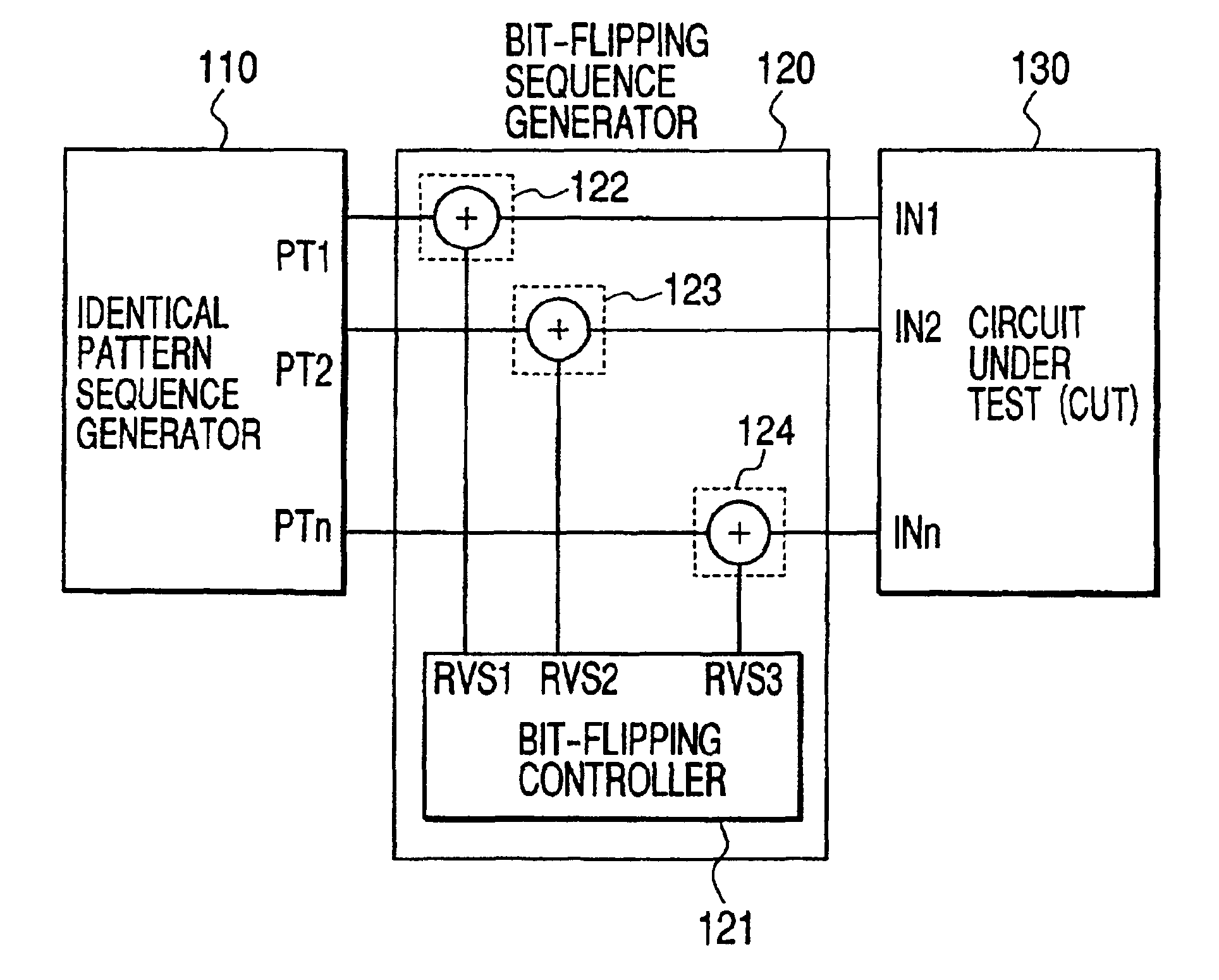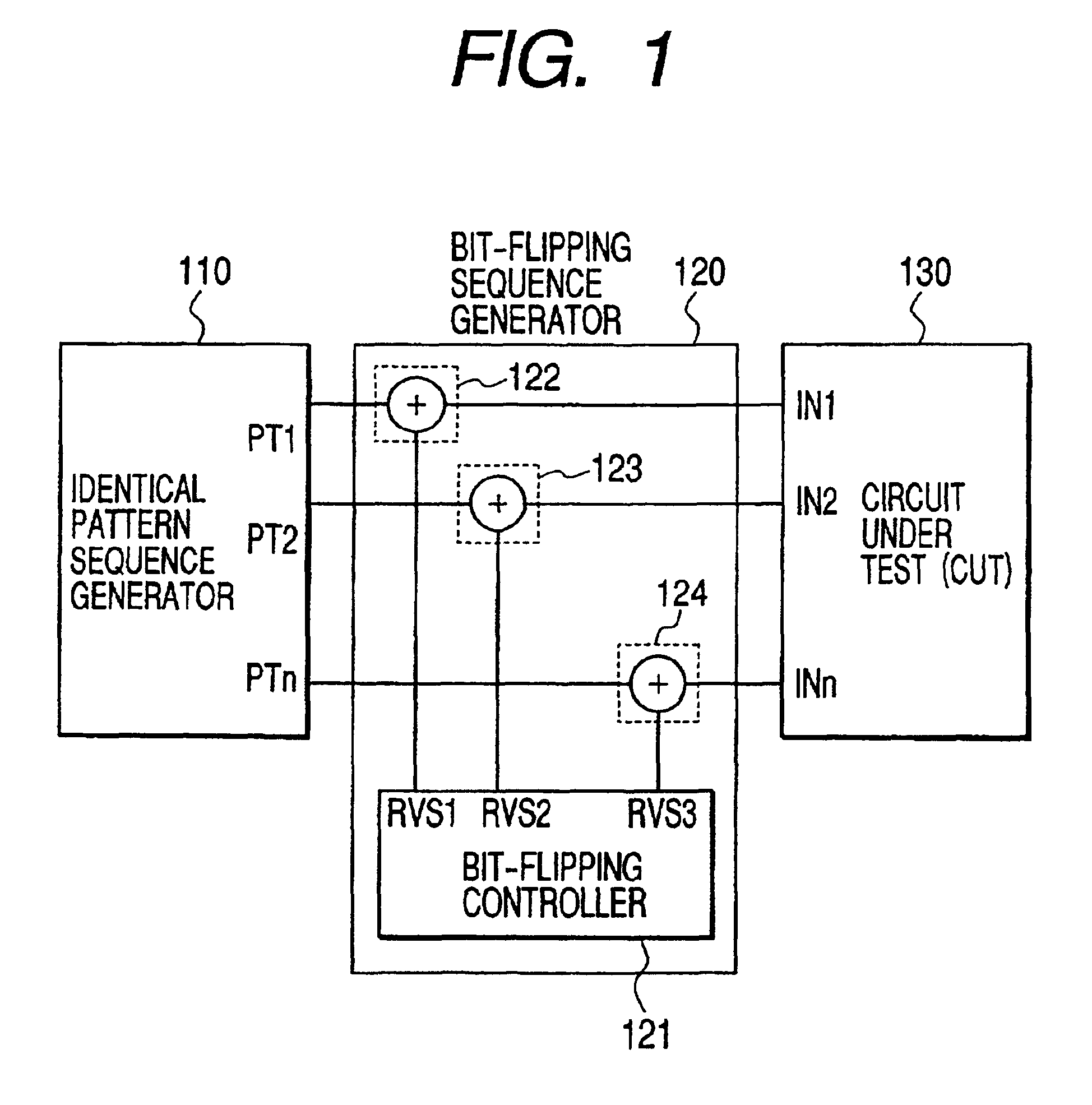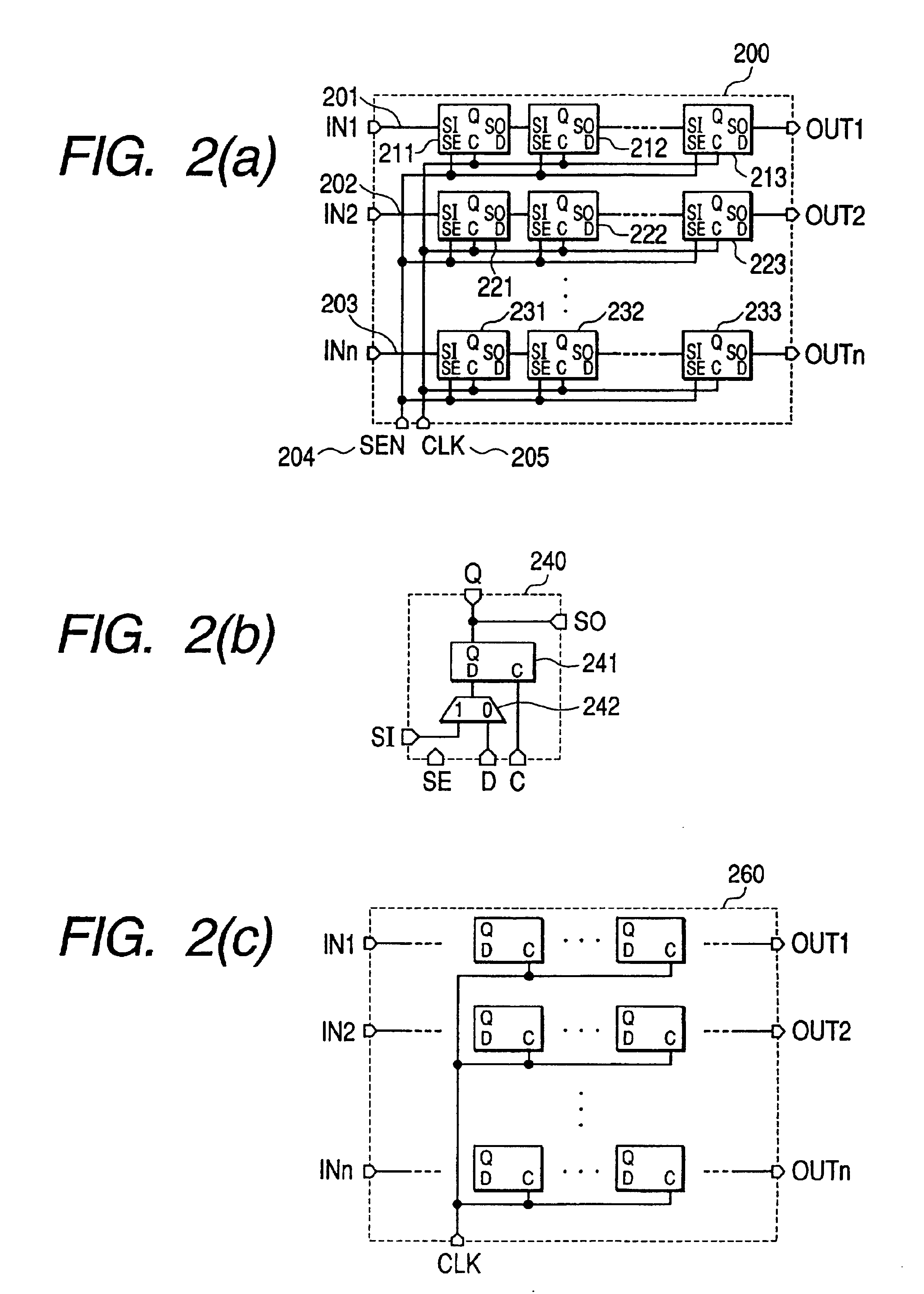Test method of semiconductor intergrated circuit and test pattern generator
a test method and semiconductor technology, applied in the direction of detecting faulty computer hardware, error detection/correction, instruments, etc., can solve the problem of large required volume of test data, large required number of test patterns or test data, and inability to guarantee high fault coverage, etc., to avoid the problem of a prolonged design period, eliminate the overhead of operating speed of the cut, and reduce hardware overhead
- Summary
- Abstract
- Description
- Claims
- Application Information
AI Technical Summary
Benefits of technology
Problems solved by technology
Method used
Image
Examples
first embodiment
[0094]FIG. 15(a) shows the structure of a semiconductor integrated circuit having a test pattern generator according to this invention. A semiconductor integrated circuit 800 (test pattern generator) comprises an identical pattern sequence generator 810, a bit-flipping sequence generator 820, and a pattern generating controller 830. The identical pattern sequence generator 810 may be either of the identical pattern sequence generators 400, 420 and 440 as shown in FIGS. 4, 5 and 6, respectively. The bit-flipping controller 821 in the bit-flipping sequence generator 820 may be either of the bit-flipping controllers 600, 620, 640 and 660 as shown in FIGS. 10, 11, 12 and 13, respectively. The pattern generating controller 830 is a decoder which turns outputs INTSEL, RDSEL, NBEN and HCCKEN from two inputs BINIT and NHGEN into four signals. FIG. 15(b) shows different combinations of the two inputs with the four outputs and the relevant modes.
[0095]In the initialization mode 841, the initi...
second embodiment
[0097]FIG. 16 shows the structure of a semiconductor integrated circuit having a test pattern generator according to this invention. The semiconductor integrated circuit 900 is composed of a test pattern generator 901 and a circuit under test (CUT) 902. The test pattern generator 901 has the same structure as the test pattern generator 800 shown in FIG. 15(a), where any combination of the relevant circuits mentioned above may be used for the identical pattern sequence generator 810 and the bit-flipping sequence generator 820. The circuit under test 902 may be either CUT 200 shown in FIG. 2(a) or CUT 260 as shown in FIG. 2(c). In this embodiment, neighborhood patterns which are valid for fault detection can be generated and thus a high fault coverage can be achieved with a smaller volume of test data.
third embodiment
[0098]FIG. 17 shows the structure of a semiconductor integrated circuit having a test pattern generator according to this invention. The semiconductor integrated circuit 920 is composed of plural test pattern generators 921 to 922 and a circuit under test (CUT) 923. Each of the test pattern generators 921 to 922 has the same structure as the test pattern generator 800, where any combination of the relevant circuits may be used for the identical pattern sequence generator 810 and the bit-flipping sequence generator 820. The circuit under test 923 may be either CUT 200 shown in FIG. 2(a) or CUT 260 as shown in FIG. 2(c). This embodiment offers not only the advantage of achieving a high fault coverage with a smaller volume of test data, but also another advantage that the overhead relating to wirings for scan chains in the CUT can be reduced by distribution of smaller size test pattern generators within the semiconductor integrated circuit.
PUM
 Login to View More
Login to View More Abstract
Description
Claims
Application Information
 Login to View More
Login to View More - R&D
- Intellectual Property
- Life Sciences
- Materials
- Tech Scout
- Unparalleled Data Quality
- Higher Quality Content
- 60% Fewer Hallucinations
Browse by: Latest US Patents, China's latest patents, Technical Efficacy Thesaurus, Application Domain, Technology Topic, Popular Technical Reports.
© 2025 PatSnap. All rights reserved.Legal|Privacy policy|Modern Slavery Act Transparency Statement|Sitemap|About US| Contact US: help@patsnap.com



